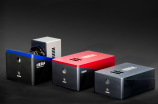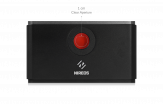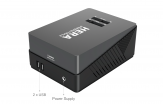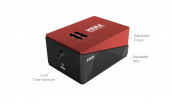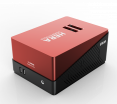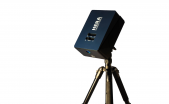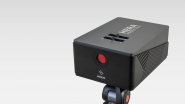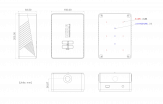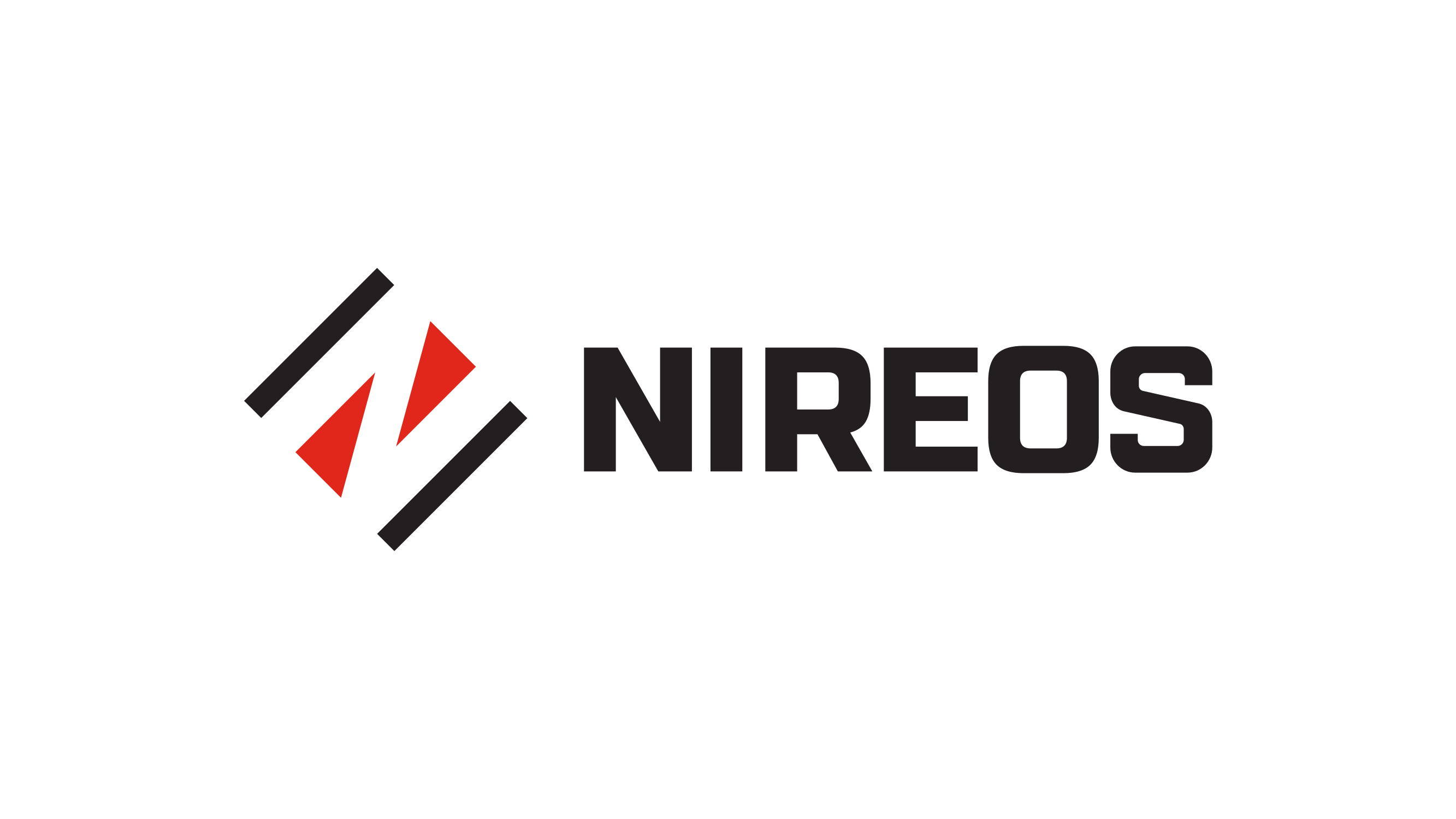HERA - Ultra-sensitive and flexible hyperspectral camera
The innovative and patented HERA hyperspectral cameras offer for the first time the possibility of recording a truly hyperspectral image similar to a conventional RGB camera in “static” mode. Instead of individual wavelengths per pixel, as with snapshot cameras, a completely continuous spectrum is created in each individual pixel of the detector.
Thanks to their very high sensitivity, even weak signals such as photoluminescence or fluorescence can be perfectly detected. Their static mode of operation enables a wide variety of measurement set-ups, for example on a tripod in the open air, with lighting indoors or even with an adapter on a conventional microscope.
Recording could not be simpler: a compact plug-and-play HERA camera is placed in front of the object or mounted on the microscope with the supplied adapter and imaging is carried out in the same way as with a normal RGB camera – after setting the focus and the exposure time, the recording is simply started. In contrast, in hyperspectral imaging, the camera or the object often has to be moved in order to record the spectra of the individual points of the object line by line and, when combined, a complete hyperspectral image.
At the same time, the underlying technology of the HERA cameras allows the spectral resolution to be set as required within the specifications and thus to find the perfect balance between spectral resolution and measurement duration. The spatial resolution is also excellent and the image is free of distortion, as every pixel of the detector can be used for spatial recording.
This makes HERA cameras the perfect solution for objects that move slowly or do not move at all. Hyperspectral imaging could not be simpler or better.
Special features
- Flexible use on any mounts and microscopes
- Outstanding sensitivity perfect for low-light applications
- Static operation for temporarily immobile objects
- Wide wavelength range from 400-1000 nm / 900-1700 nm / 400-1700 nm / 900-2300 nm
- Very high spectral and spatial resolution
- Compact and robust plug-and-play camera
- User-friendly software and basic analysis functions included
- Export to standard software formats (ENVI, Matlab, Perception Studio, perClass Mira) for in-depth analyses
Available accessories
- FOV Extender lens approximately doubles the field of view
- Macro lens enables closer macro shots
- Microscope adapter for coupling to camera ports of microscopes
- Filter holder can be screwed on
- LED and halogen lighting solutions, also as a light box for shadow-reduced shooting
- White references for relative calibration of the camera
- Powerful, pre-installed laptop
- Tripod, swivels for horizontal and vertical shots
- Software Development Kit for control via your own scripts
Technical background
For the HERA camera, the usual Fourier transform spectroscopy is transferred to a hyperspectral camera. An interferogram is recorded in each pixel, which is converted into the spectrum of the incident light via Fourier transformation.
What makes the HERA camera unique is the innovative interferometer developed by NIREOS, which is also available separately under the name GEMINI. This patented common-path interferometer, which is based on the method of two birefringent splines against each other, achieves a unique stability in the delay of better than one attosecond. Finally, Fourier transform spectroscopy can also be operated in the visible wavelength range!
The advantages of this technology are obvious: since the spectral resolution of the HERA camera depends on the phase difference between the two beam replicas, the spectral resolution can be freely selected up to a maximum. The maximum possible spectral resolution is determined by the maximum travel distance between the birefringent splines. In each pixel you obtain a continuous spectrum with the desired number of spectral bands.
This technology eliminates the need for gratings and slits, significantly improving light throughput and making the HERA camera perfect for low-light applications – not least because of the camera’s 1 cm aperture.
In addition, filters in front of the individual pixels, as used in (multispectral) snapshot cameras, can also be dispensed with here. This means that every pixel of the detector is used for spatial recording, the full resolution of the detector can be used and pixel-related spatial allocation errors or geometric distortions are a thing of the past.
Hyperspektralkamera HERA Tutorial
Technical specifications
| HERA VIS-NIR | HERA SWIR | HERA eSWIR | HERA VIS-SWIR | |
|---|---|---|---|---|
| Spectral range | 400 - 1000 nm | 900 - 1700 nm | 1200 - 2200 nm | 400-1700 nm |
| Sensor spatial resolution | 1280 x 1024 pixels | 640 x 512 pixels | 636 x 508 pixels | 1280 × 1024 pixels |
| User adjustable spectral resolution | <1.5 nm @ 400 nm <10 nm @ 1000 nm | <5 nm @ 900 nm <20 nm @ 1700 nm | <10 nm @ 1200 nm <30 nm @ 2200 nm | <1.5 nm @ 400 nm <20 nm @ 1700 nm |
| Sensor | CMOS | cooled InGaAs (ΔT = 30°) | InGaAs with TEC | Sony IMX990 |
| Number of bits | 12 bits | 14 bits | 14 bits | 12 bits |
| Software interface | Acquisition App & HyperLab Software included, SDK available (C API / .NET API) | |||
| Number of spectral bands | ∞* | ∞* | ∞* | ∞* |
| Field of view | 8 degrees | 11 degrees** | 11 degrees | 8 degrees |
| Working distance | 60 cm - ∞ | 1.5 m - ∞ | 1 m - ∞ | 80 cm - ∞ |
| Dimensions | 205 x 150 x 83.5 mm | 220 x 160 x 105 mm | 240 x 170 x 140 mm | 246 × 160 × 107 mm |
| Weight | 2 kg | 2.85 kg | 4.5 kg | 3 kg |
| Minimum Computer Requirements | 32 GB RAM, SSD drive suggested | 32 GB RAM, SSD drive suggested | 32 GB RAM, SSD drive suggested | 32 GB RAM, SSD drive suggested |
*HERA is FT spectroscopy based instrument and number of spectral bands is software selectable and independent from measurement time.
